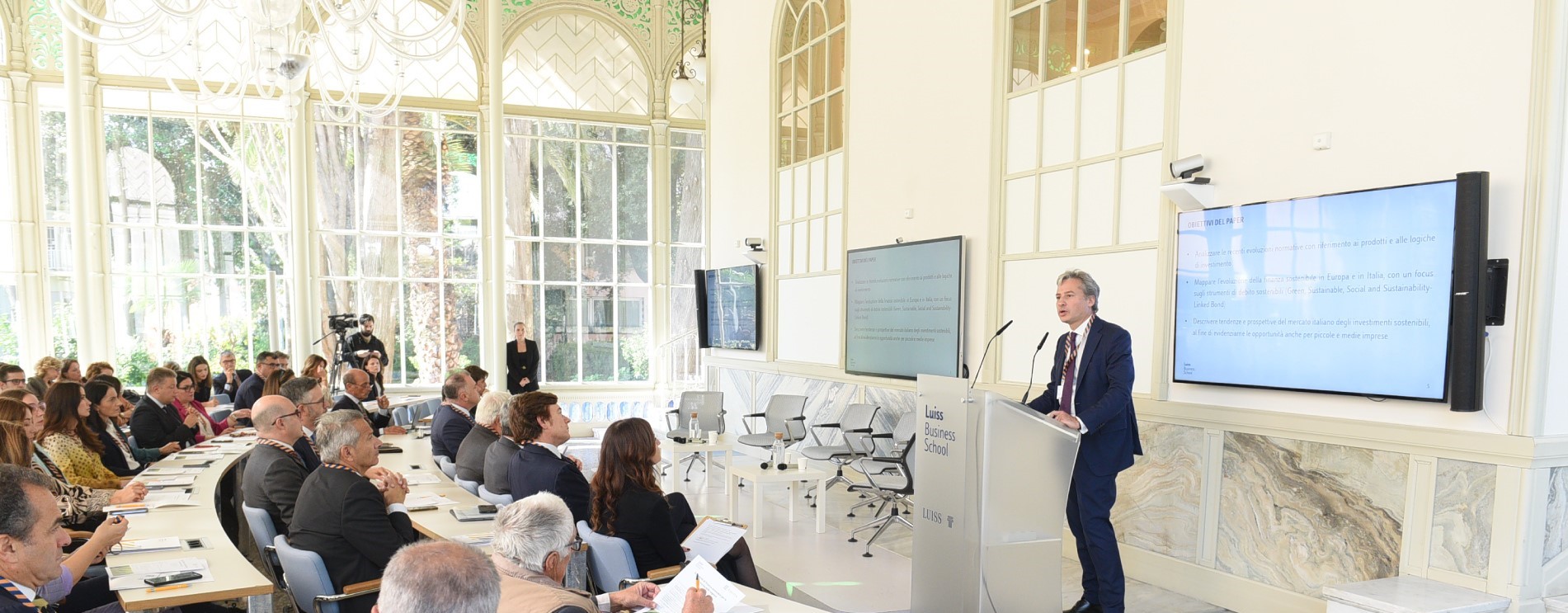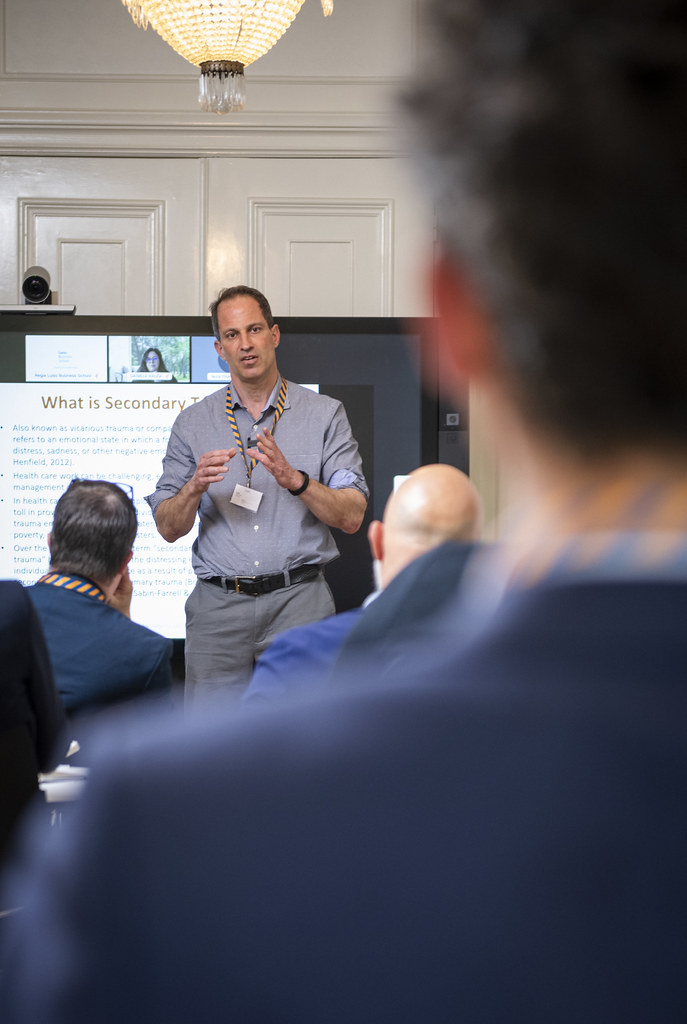The Covid–19 pandemic has complicated lives in healthcare organizations. A meeting at Luiss Business School Amsterdam Hub examines how leaders must face secondary trauma and its effects
The Covid–19 pandemic has changed all the work life balance of healthcare workers and exacerbated the long–lasting phenomenon of post–traumatic stress symptoms (PTSS) in this field. Hospitals were reorganized. Treatments for patients have been stopped. Operations have been canceled. Nurses were relocated. Teams were not cohesive anymore. Managing these situations is a challenge worldwide as healthcare workers are likely to experience acute and chronic, often unpredictable, occupational stress leading to PTSS. Mental life wellbeing is a concept that more often returns in leadership discussions.
During the event Secondary Trauma Challenges Impacting the Healthcare Ecosystem, Dr. Anthony Silard, Associate Professor of Leadership and the Director of the Center for Sustainable Leadership, Luiss Business School, explored effective approaches to identify and improve post–traumatic stress symptoms. Special emphasis has been given to the role that managers and leaders play in helping health employees to process secondary trauma and restoring a healthier working environment.
What is secondary trauma and how to tackle it
Secondary trauma is challenging the healthcare ecosystem. “Also known as vicarious trauma or compassion fatigue, secondary trauma refers to an emotional state in which a focal person experiences the pain, distress, sadness or other negative emotion of a second person” (Parker & Henfield, 2012). This happens at three levels: intrapersonal, interpersonal and organizational.
Healthcare work can be challenging, especially in the domain of managing emotions. In healthcare organizations, employees might pay a considerable emotional toll in helping individuals living with primary or personal trauma emanated from life-threatening situations such as crime, violence, imbued clients poverty, illness and natural disasters. Over the past few decades, the term “secondary trauma” or “vicarious trauma” has evolved to depict the distressing emotional state an individual is likely to experience due to protracted interaction with a second person experiencing primary trauma.
There are 5 primary emotions in human life: anger, sadness, joy, fear and love. Each of them leads to secondary emotions in the person who is experiencing the first one and in others. It requires deep resources to cope with these feelings. «Secondary trauma is our most toxic emotion because it arises from a loss of hope», said Silard. The emotion prototype approach provides a useful organization framework for discrete emotions.
Whether related to primary trauma or secondary traumatic stress/vicarious trauma (STS/VT), stress symptoms and effects are very similar and can significantly impact individuals, teams and organizations. A large body of evidence exists which links such events to associated mental health issues among healthcare workers. As healthcare personnel perform their job duties – which might involve displaying care, empathy and compassion for trauma-affected clients – they put themselves at high risk of incurring secondary trauma. This challenges organizational lever for retention and recruitment.
How do leaders manage changing emotions
If a team is experiencing a primary trauma, then leaders can receive some of it and develop secondary trauma. At interpersonal level, they can manage it. The leader emotion management (LEM) is concerned with “the processes and behaviors involved in assisting employees in regulating their emotion experiences so as to facilitate the attainment of organizational objectives” (Kaplan et al., 2014:566). LEM behaviors will respond to the needs of employee with secondary trauma experiences. First, leaders must display empathy, and acknowledge and validate team member secondary trauma experience. «Secondary trauma exists, believe it or not», said Silard. LEM behaviors that improve secondary trauma consist of facilitating staff emotion regulation abilities; fostering follower post–traumatic growth; modeling emotion complexity.
Still, there is a silver lining of secondary trauma: it may help both staff experience and the organizations for which they work. The Post-Traumatic Growth (PTG), such as the one experienced after Covid pandemic, leads to be more open to new experiences; value themselves more; reevaluate their life priorities, goals, relationships and spirituality; might prepare for future adversities. In a trauma–informed management strategy, leaders must be compassionate companions. Compassionate companionship behaviors support the trauma and encourage growth; help the other person back up from the tree and see the forest; don’t fall into the problem person/solution person false dichotomy; meet their vulnerability with your own.
The organization level is about policies and getting people together, around the trauma debrief. «Create an emotional processing culture, an authentic climate where people can express their emotions», suggests Silard.
How to manage secondary trauma in healthcare organizations
In a roundtable led by Luca Magni, Professor of Practice, Luiss Business School; Scientific Director of the Executive Programme in International Pharma and Healthcare Administration, Luiss Business School, has been discussed how to manage secondary trauma in healthcare organizations.
«We had a huge global experiment: Covid pandemic – said J. A. Hans Romijn, Professor of Medicine, University of Amsterdam; Internist, Former Chairman and Dean of Amsterdam UMC, University of Amsterdam; Coordinator of the merger of the two UMCs in Amsterdam – It required a whole reorganization of hospitals. Treatments of patients have been stopped. Nurses were relocated. Teams were not cohesive anymore. There were running out of material, fear of getting sick. People were dying without their families. This has led to a large amount of stress».
«Starting from secondary trauma, the question must be: is the world ready to create compassionate enterprises? – asked Laura Mckeaveney, Patient Advocacy Expert, with relevant experiences in multiple corporate roles, the latest being the one of Global Head of Patient Advocacy, Novartis – We have so much journey to travel to get to more humanistic organization, even if we need to do profit».
«Language has an important task – says Daniele Raugi, Head Global HR Corporate Functions & Europe, Sanofi – We must normalize talking about feelings. Covid forces organization to look at the whole human being. Leadership has been evolving and the role of the leader is changing they must develop and grow people. It goes from empowerment to be authentic. As a leader, you create the right environment».
5/23/2022















